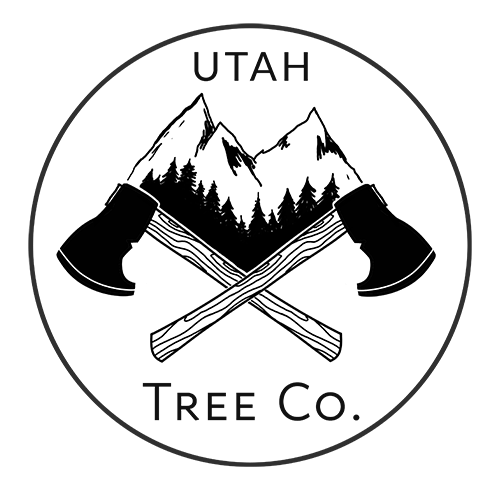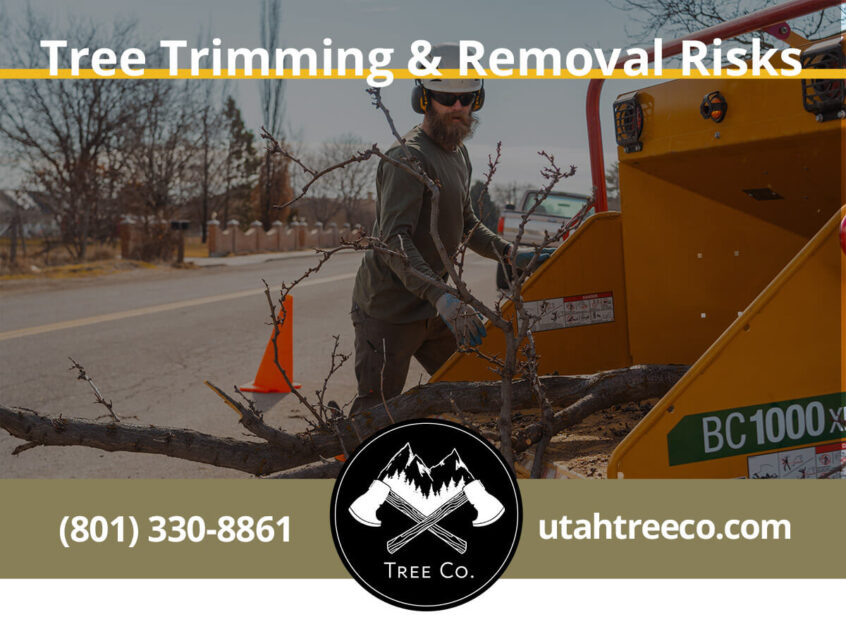Cutting down a tree may seem like a simple task, but when you really think about it, it’s quite complicated. Most homeowners don’t know this, but getting the job correctly and safely done requires ample prior knowledge and experience.
DIY tree removal goes beyond simply hitting the base of the trunk with an axe or a chainsaw and letting it fall. Several crucial risks need to be factored into your decision to fall a tree yourself.
The fact of the matter is, DIY tree removal may be unwise. As experienced Utah tree removal experts, we certainly don’t recommend it as it can lead to serious accidents and even prove to be life-threatening. If the job goes awry, it will do more harm than good to your property. Engaging in a professional tree removal service is always a prudent option.
Here’s a Few Risks Of DIY Tree Trimming and Removal
Mentioned ahead are a few risks involved in DIY tree trimming and removal that you need to take into consideration before reaching for your trusty chainsaw.
1. Climbing Ladders
Before felling a tree, you will have to cut down its widespread branches, which may be located at various heights. You will obviously need to climb a ladder to reach these branches.
However, climbing a ladder with a chainsaw in hand is extremely dangerous. You could miss a step and lose your balance, in turn, losing control of the chainsaw and falling off the ladder. Ultimately, this would mean sustaining multiple injuries.
Further, misplacing the ladder or using it on uneven ground, or even using the wrong kind of ladder can lead to serious mishaps. If, for instance, you’re at an improper height and the ladder doesn’t extend at least three feet across the branch, the bigger branches can come in your way. The branch may extend above the ladder when you cut it, and potentially lead to your fall.
2. Using Unsuitable Tools
Using incorrect or malfunctioning tools, like blunt chainsaws or axes, for tree removal can also lead to serious risks. When improper tools are used, it is easy to make mistakes and cause an imbalance, which is the last thing you want when cutting down a tree.
3. Improper Chainsaw Handling
Handling a chainsaw is no mean task and requires ample practice if you want to get the angles right. Apart from angles, you need to consider the weight distribution and insertion of the bar into the tree trunk.
Further, you will need to know how to control the chainsaw at all times when it is in use. After all, you don’t want to injure yourself with it.
In fact, a huge risk involved in operating a chainsaw is known as a kickback, where the chainsaw jerks back at the user. This can prove to be extremely hazardous if there are nails or bolts in the tree you’re falling.
4. Incorrect Calculations
Another critical aspect of tree removal is making accurate calculations with respect to its height and the angles you cut. These will help you determine where and when the tree will actually fall.
Miscalculations in this aspect can prove to be dangerous as the tree can be wrongly cut and fall in the wrong direction, destroying property and injuring people.
5. Lack of Understanding of Gravitational Force
As mentioned, tree removal involves the risk of large and heavy branches falling on and damaging your property or car or even injuring you. The simple fact is, that where the falling tree limbs will land cannot always be predicted. In some cases, the weight of the trees and branches can be deceptive, leading to an incorrect estimate of the center of gravity.
Getting them to land safely on the ground can require the use of a rope and a pulley, which may be too heavy to hold without professional help.
6. Power Lines
If the tree you’re planning to cut is located around power lines, the risk of cutting it down can multiply, especially if the power lines are live.
Know that if the tree in question or your tools or even you hit the power line accidentally, it can cause a blackout in your entire neighborhood. If worse comes to worst, you could end up electrocuting yourself.
Most homeowners think that the black coating around the power lines is protective insulation. In truth, the coating will do nothing to keep you from getting electrocuted. It only protects the metal cables from weather elements.
7. Decaying Wood
Trees can have dead or decaying wood patches, making tree removal trickier. If you’re unaware of the decay, chances are you will miscalculate the tree’s center of gravity and fall zone.
Determining decay in trees requires considerable knowledge and experience, and is often impossible for DIYers.
8. Dangerous Branches and Debris
Sometimes, loose branches may also start to fall free when the tree is falling. These loose limbs and debris may hurt people on the ground or even damage your house and belongings. They, therefore, need to be managed carefully. This can be especially risky if the tree being cut is already dead.
9. Improper Safety Gear
Working with a chainsaw necessitates that the user wears proper safety gear before beginning their work. A logger’s helmet, safety glasses, earmuffs, face screen, gloves, and harnesses are essential safety gear. You should also wear chainsaw pants that block chainsaws and protect your legs. Without these, you’re at great risk of injuring yourself.
However, buying all this gear will likely surpass the average cost of tree removal by a professional. Therefore, instead of spending on equipment and gear, it is better to entrust the job to the experts who will do it the right way.
10. Personal and Others’ Safety
According to findings, “Tree care workers have one of the most dangerous jobs in America, regularly encountering heights, slippery conditions, falling limbs, sharp equipment, and electrical wires.”
Another finding reveals that “The tree care industry is the fourth deadliest occupation in the United States.”
You need to know how to make near-accurate estimates of the felling zone, and even clear this zone to avoid tripping in case you need to dodge the falling tree. Moreover, you need to watch out for falling branches and debris.
Another important risk factor to consider when attempting a DIY tree removal is whether or not your insurance will cover any resulting accidental damage. If it doesn’t, you can end up ruining your finances.
If your family members or neighbors are helping you or watching your tree removal activities, they may also be at risk of getting injured.
Professional tree removers, on the other hand, will create a safe working zone and keep people at a safe distance, avoiding any mishaps.
11. Property Damage
DIY tree removal can also result in major damage to your property, which can drain you financially. If you cannot figure out where the tree will fall, you risk your home and belongings as well as those of your neighbors becoming collateral damage. Remember, damage to property can lead to huge expenses and increased insurance costs.
12. Complicated Cleanup
At the time of tree removal, you will need to cut it into sections so it is easy to transport it and clean up the site. If the tree is huge and you’re cutting it down yourself, it may take you months to clear every remnant of the tree.
For tree removal pros, however, this is a one or two-day job. This means that hiring experienced tree removers will actually help you lower your tree removal costs.
13. Fines
In some cases, homeowners may need to take formal consent from their neighbors or get an official permit from the local municipality before cutting down a tree. This is particularly necessary if the tree is growing on your neighbor’s property. Failure to get the right permits may require you to pay hefty fines, forcing you to part with your money over something that could have been easily avoided.
Conclusion
There’s no denying that trees add great aesthetic value to your property. They also help purify the air around you, provide you with shade, and offer privacy. However, sometimes, trees can get damaged or infested and even pose a danger to your property. This is when you need to seriously consider removing them.
Several homeowners make the mistake of undertaking DIY tree removal, which can be a risky endeavor. Hopefully, the above points will explain why you shouldn’t take the DIY route and entrust the job of tree trimming and removal to the professionals.

